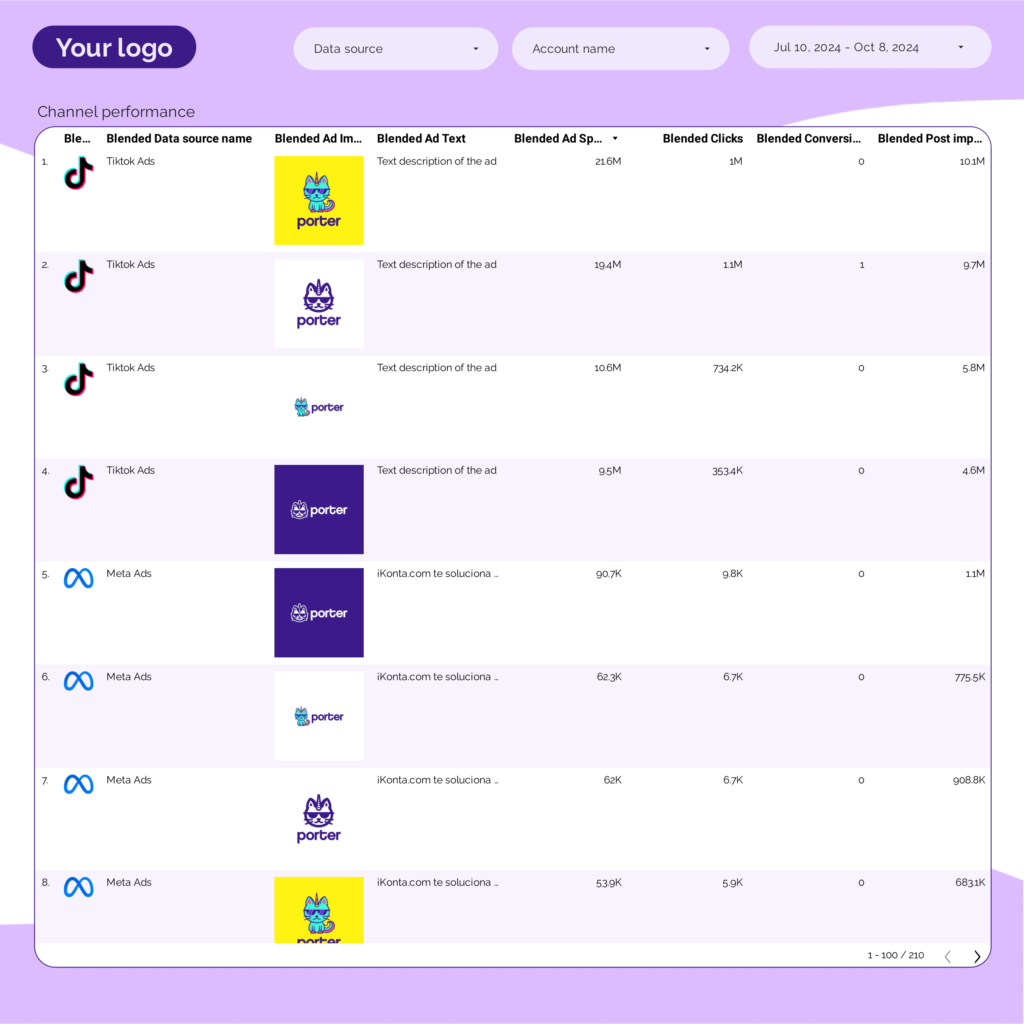A PPC Creative performance report should include the following elements:
1. Campaign Name
2. Date
3. Platform (e.g., TikTok Ads, Facebook Ads, Google Ads, Twitter Ads, LinkedIn Ads)
4. Impressions
5. Clicks
6. Ad Spend
7. Engagement Rate
8. Followers (if applicable)
9. Leads
10. Post Type
11. Industry
These metrics will help assess the effectiveness of the creative elements across different platforms.
To analyze PPC creative performance data, focus on key metrics such as impressions, clicks, ad spend, engagement rate, and leads. Compare these metrics across different platforms like Facebook Ads, Google Ads, LinkedIn Ads, TikTok Ads, and Twitter Ads. Evaluate the performance by campaign name, date, post type, and industry to identify trends and insights. Use this data to optimize creative elements and improve overall campaign effectiveness.
To build a PPC Creative performance dashboard, follow these steps:
1. **Data Collection**: Gather data from various ad platforms like Facebook Ads, Google Ads, LinkedIn Ads, TikTok Ads, and Twitter Ads. Focus on metrics such as impressions, clicks, ad spend, engagement rate, followers, and leads.
2. **Data Integration**: Use a data integration tool to consolidate data from all platforms into a single database or spreadsheet. Ensure that the data is organized by campaign name, date, post type, and industry.
3. **Dashboard Tool Selection**: Choose a dashboard tool that suits your needs, such as Google Data Studio, Tableau, or Power BI.
4. **Dashboard Design**: Design the dashboard to display key performance indicators (KPIs) like impressions, clicks, ad spend, engagement rate, and leads. Use visual elements like charts and graphs for better data visualization.
5. **Customization**: Customize the dashboard to allow filtering by campaign name, date, post type, and industry to enable detailed analysis.
6. **Automation**: Set up automated data refreshes to keep the dashboard up-to-date with the latest performance data.
7. **Testing and Iteration**: Test the dashboard for accuracy and usability. Make necessary adjustments based on feedback and performance analysis needs.
A PPC Creative performance dashboard is a tool used to track and analyze the effectiveness of creative elements in pay-per-click advertising campaigns across various platforms such as Facebook Ads, Google Ads, LinkedIn Ads, TikTok Ads, and Twitter Ads. It typically includes metrics like impressions, clicks, ad spend, engagement rate, followers, and leads, allowing marketers to assess the performance of their creative content and optimize their strategies accordingly.


 Instagram Insights
Instagram Insights HubSpot
HubSpot LinkedIn Pages
LinkedIn Pages Impressions
Impressions